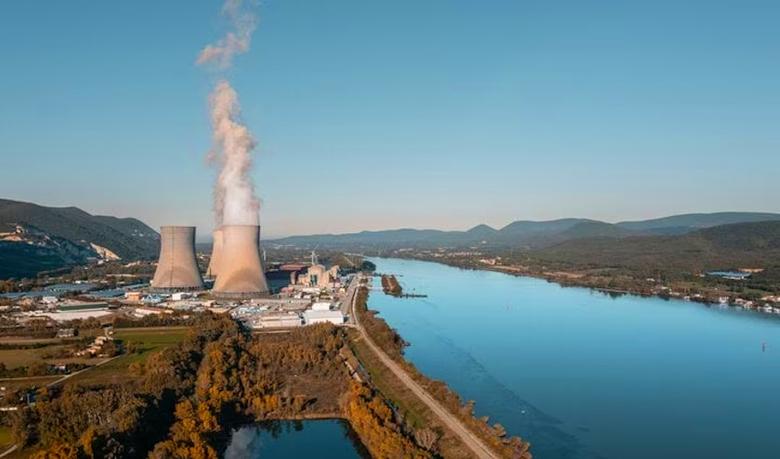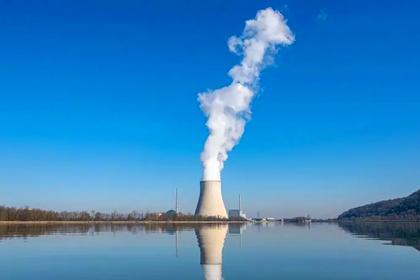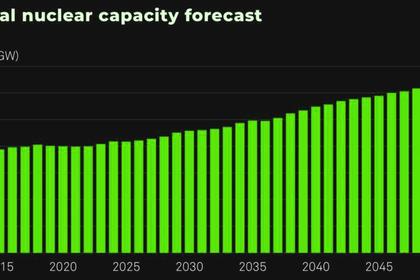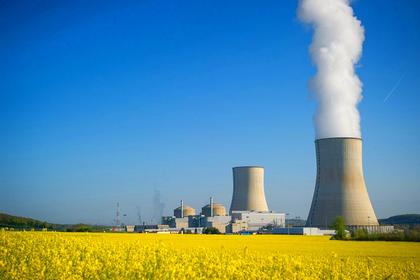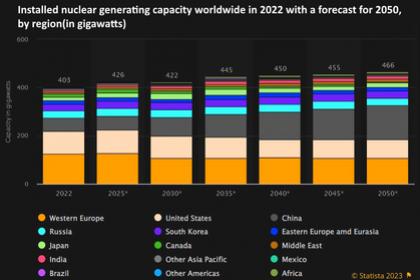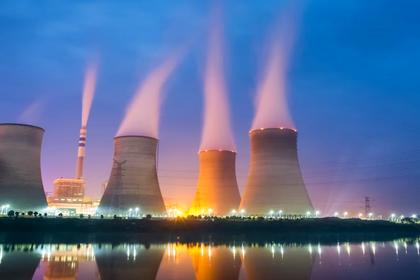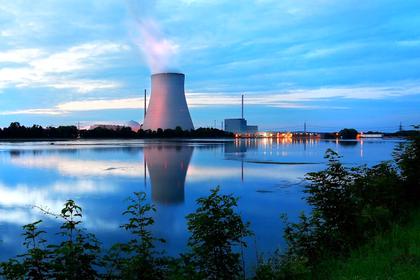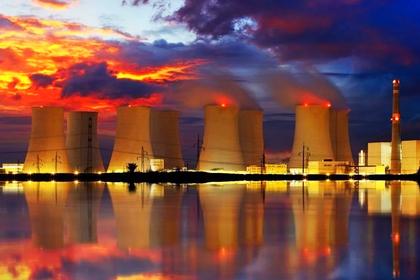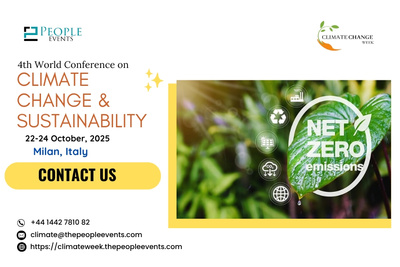Now, due to climate change (and significant federal funding), the current push for nuclear seems to have a bit more momentum, raising the possibility that this one might actually go somewhere. The question I want to look at is whether it should.
Nuclear proponents have a long and consistent history of over-promising and under-delivering, with examples including nuclear-powered airplanes and merchant ships and power “too cheap to meter.” Accordingly, the credibility of the present claims made in support of nuclear power (many of which mirror past claims) also requires a close look.
A bit about my background, and the analytical framework I am using. I am not a nuclear engineer, a climate scientist, or an economist. I am trained as an attorney and as a judge, and I have over 25 years of experience working in the field of energy regulation. I was the administrative law judge that presided over the application of Pacific Gas & Electric (PG&E) to retire its Diablo Canyon nuclear power plant. I wrote the decision adopted by the California Public Utilities Commission (CPUC) that authorized the retirement of Diablo Canyon, which was subsequently largely reversed by California’s governor and legislature, with a boost from the Biden administration.
Because I am trained and experienced in weighing evidence and arguments, that is what I am going to do here. My focus will be on the issues of nuclear energy’s safety, generation characteristics, cost, waste and location.
Safety
I see the evidence relating to nuclear energy’s safety as the following:
1) numerous nuclear plants have operated safely for years with minimal or insignificant safety issues;
2) there have been three significant nuclear energy safety incidents, at Chernobyl, Three Mile Island and Fukushima; and
3) a significant number of “near miss” incidents.
By itself, the fact that numerous nuclear power plants worldwide and in the US have operated for years with no significant problems indicates that the likelihood of a nuclear accident is low. Because it is impossible to know with certainty that something that has not occurred in the past will not happen in the future, plus the fact that there have been some nuclear accidents, the likelihood of a future nuclear accident, while small, is not zero. However, because past accidents have been rare and infrequent, it is very difficult to calculate the statistical likelihood of a future accident.
Nuclear proponents argue that newer designs are safer than the older designs, particularly when compared to the facilities that had accidents. This is likely true, and moves the likelihood of a nuclear accident closer to zero as newer plants replace older ones. But again, we cannot assume that there cannot and will not be a nuclear accident in the future, even with the newer designs. And in addition to the newer plants, older plants are continuing to operate, with those same nuclear proponents frequently arguing to extend their operational lives while simultaneously minimizing the potential risks presented by aging equipment.
Bottom line from just this piece of evidence: significant nuclear accidents appear unlikely to occur, but a precise calculation of the likelihood of a future significant nuclear accident is not possible.
Looking next at the three significant nuclear accidents adds some useful additional information.
First, Chernobyl. Nuclear proponents argue that from a safety standpoint, nothing in operation in the US is anywhere close to as bad as the Chernobyl plant, and they are correct. Chernobyl was Soviet designed, built and operated, with every negative connotation that implies. Accordingly, Chernobyl does not provide much useful evidence regarding the likelihood of a significant nuclear accident in the US.
What Chernobyl does provide, however, is evidence of the potential seriousness and impact of a significant nuclear accident. The result of the Chernobyl accident was massive and catastrophic. Accordingly, it is possible that a significant nuclear accident in the US could also have a massive and catastrophic impact. The actual size and damage that may be caused by such an accident cannot be calculated because too many variables are involved.
Second, Three Mile Island. Three Mile Island had a partial meltdown, but with relatively little radiation released, and the US took significant steps to improve nuclear safety in the wake of Three Mile Island. Accordingly, it is not clear that the Three Mile Island accident tells us much about the likelihood of a future nuclear accident beyond the fact that it showed that a nuclear accident could occur in the US. The fact that very little radiation escaped may show one (or both) of two things:
1) improved design can provide containment of radiation and reduce the impact of an otherwise significant accident, or 2) they got lucky.
Third, Fukushima. This accident occurred in Japan and resulted from an earthquake and large tsunami that damaged the plant. This is Japan, not the Soviet Union. This is the land of Sony and Toyota, and where they are familiar with and plan for earthquakes and tsunamis. Nevertheless, this accident resulted in major damage to the plant and a significant release of radiation.
This accident shows that a significant accident can occur even at what should have been a well-designed and well-operated plant. (Although there were allegations of poor management by the plant operator and poor oversight by the responsible government regulatory agency.) And while not as catastrophic as Chernobyl, the impact of the Fukushima accident was quite serious.
Another source of information are the “near misses” experienced by US nuclear power plants, which are incidents that significantly increased the likelihood of, but did not actually result in, a more major accident. The majority of these appear to have been caused by equipment failures or human error (either in operating the plant or in responding to an equipment failure). Without a deep dive into the details of each one, it is hard to know why they did not result in a more major accident – whether it was due to safety features built into the design (a positive, showing that those work), a good response from the plant operator (also a positive), or just sheer luck (a negative). Absent that analysis (which I have not done) there is not much can be gleaned from these, other than the fact that equipment failures and operator errors do occur at US nuclear plants.
I have seen criticism of the NRC’s regulatory regime that it is needlessly burdensome, slow and expensive, and could be much more efficient. I have not examined this, but that is certainly plausible. Some nuclear advocates argue that the NRC’s exclusive focus on safety should be modified to also take into consideration the potential benefits of nuclear energy, particularly in relation to climate change. This is a bad idea. First, under the current NRC regime, the US nuclear industry has a very good safety record. And second, the NRC’s predecessor, the Atomic Energy Commission (AEC) was eliminated specifically because its role of both promoting and regulating nuclear energy presented a conflict of interest. We have other real-world examples of the problems that can result from such a conflict, like the recent Boeing 737 Max 8 and Max 9 incidents.
Conclusion: the likelihood of a serious nuclear accident in the US is low, but cannot be ruled out, and the impact of such an accident could be very significant.
Generating Characteristics
I have seen statements to the effect that: “we need baseload power.” If by baseload we mean large plants that just run at 100% capacity all the time, no, we don’t need those. Even before the recent significant increases in intermittent generation sources, large plants operating at full capacity could cause overgeneration problems. PG&E’s large Helms pumped storage facility was designed and built decades ago, in large part as a way to store excess energy generated in off-peak hours by its Diablo Canyon nuclear power plant, which operates as a baseload source.
Today, with lots of solar and wind generation, overgeneration becomes even more of a problem, and having a baseload plant that cannot ramp down means that those inexpensive sources of generation will have to be curtailed more often. (In some places with a large and steady 24-hour load and very little wind or solar generation, baseload plants might make sense, but I think those places are pretty rare.)
With the current intermittent-heavy generation portfolio, any non-intermittent generation source should be dispatchable/rampable. To date, US nuclear power plants have not operated that way, and as a practical matter many of them probably can’t be operated that way. I understand that some newer plants, particularly in Europe, are more rampable, and can be used in a load-following mode, so it appears possible that newer nuclear plants in the US may be able to do so as well. But given that this would lower the plants’ capacity factor and the corresponding payments received for generating energy, there is a potentially adverse economic effect from operating this way, particularly given nuclear plants’ high capital costs. The more a nuclear plant operates at less than its optimal full capacity, the higher the unit cost of its actual output.
There seems to be a debate about whether new nuclear plants should be big or small. Historically in the US, nuclear plants have been big (and very expensive), but there are also advocates for small modular reactors (SMRs). I kind of like the idea of SMRs that are manufactured in a factory instead of onsite, hopefully reducing the cost overruns that have plagued recent large reactor projects. SMRs, even if operated as baseload units, by virtue of their smaller size are less likely to cause an overgeneration problem, and would also be better suited to a distributed generation model. Plus the idea of plopping down a few SMRs at the site of old coal plants is attractive, as they could utilize the existing transmission facilities.
Nuclear advocates like to point out that nuclear generation provides the most energy for the amount of land used. For SMRs or other small reactors that may be placed on constrained sites, this could be a significant advantage. For big reactors, this probably does not matter much, as the US is a large country and they are unlikely to be sited in crowded or expensive urban areas.
Conclusion: if new nuclear plants, particularly large ones, can operate safely and cost-effectively in a dispatchable or load-following mode, they could provide a viable source of low-carbon and non-intermittent generation. SMR plants provide the possibility of additional benefits, with more flexible siting and better compatibility with distributed energy models.
Cost
This has been the major problem with nuclear power in the US, including in California. The seemingly eternal promise of cheap nuclear power has never come true, and is still a problem, with recent examples including the Vogtle cost overruns and San Onofre’s massively expensive equipment failure (not to mention the potentially huge costs of accidents such as Fukushima).
SMRs seem to be running into the same problem, with NuScale radically increasing the projected per MWh cost of power from its plants. I have also seen what looks to be a credible argument that all small thermal power plants are less efficient than large ones, which if correct would make SMRs less cost effective.
Nuclear proponents often claim that unreasonable public fear and an overly-cautious and slow NRC are the reason that few nuclear plants have been built in recent decades. While public opposition and the burden of NRC approval are certainly impediments, the cost of the plants has really been the main obstacle.
In the absence of a significant carbon tax or price or an outright prohibition on fossil plants, it is not clear why anyone would have wanted to build a nuclear power plant when they could have built a gas plant, especially with low US gas prices. Compared to a gas plant, a proposed nuclear plant would not only require the time and expense of an NRC review, take longer and cost more to build, and until very recently generate significantly more public opposition. And then after going through all that, what do you get? You are selling the same commodity product as the gas plant, and if anything you might get less money by being less dispatchable.
While nuclear proponents cite to examples of nuclear power plants in other countries providing power at low per MWh prices, it is hard to understand how those prices indicate what is possible in the US without unpacking a lot more detail about rate structures and subsidies. US plants also get a significant subsidy or government support through socialization of the potential liability costs of a nuclear accident.
The bottom line is that nuclear generation in the US has a record of being largely not cost effective, at least in the absence of a significant carbon cost. (And the addition of a carbon tax or price doesn’t make nuclear any cheaper, it just makes fossil fuels more expensive.) Nuclear has been promising for decades to deliver power that is “too cheap to meter,” and it has consistently failed to meet that promise. Past assurances of future cheap nuclear power have been worthless, and that gives similar present claims a credibility problem. If and when US nuclear generation actually delivers on its promises of low costs, at that point we can believe them.
Waste
This often comes across as a binary issue – nuclear proponents say that waste is not such a big problem, that the physical amounts and radiation levels associated with nuclear waste are relatively small, and that the potential dangers have been grossly overstated. Under this view, the current methods of waste storage, while intended to be temporary or interim, and safe and satisfactory. By contrast, nuclear opponents argue that the potential dangers are extremely high, particularly due to the long duration of radioactivity emitted by the waste. And they argue that not only are the current waste storage methods inadequate and unsafe, pretty much no storage method could actually be guaranteed to be safe.
From my perspective it is not clear where the needle should fall between these polar opposites, and I’m not going to try to figure that out here. What is clear is that the issue is a significant one, and that the US does not have a clear, consistent and science-based policy for dealing with nuclear waste. Such a policy may be possible, but like cheap nuclear power, we don’t have it yet.
Conclusion: The absence of a coherent approach for dealing with nuclear waste should give pause to plans that would create more of it.
Location
Where to locate large nuclear power plants is an issue that seems to rarely be addressed. (Location is regularly addressed in discussions of SMRs and other small reactors.) Again, it often looks binary, with proponents saying “build them everywhere” and opponents countering “build them nowhere.” Building them everywhere is not a credible position. For every type of generation, including nuclear, location is a key consideration. Site constraints, available transmission capacity, the availability of fuel and other supplies, distance and characteristics of load, cost of land, local land uses, and environmental and cultural impacts all need to be taken into consideration.
The potential viability of nuclear power plants varies significantly by location. In areas like California, with significant renewable resources (both online and potential) and barriers to siting nuclear power plants such as earthquakes and a tight water supply, nuclear is not a very attractive choice. For California and similar states that are water-poor but have plentiful sun and/or wind, renewables combined with energy storage looks like a more attractive choice, especially since storage appears to be making much faster progress than nuclear on both the technological and cost fronts. In areas with fewer renewable resources and earthquakes but more water, such as the US southeast, nuclear may be a more viable choice.
Conclusion
It looks a bit premature to have a fanfare announcing a new nuclear renaissance. While nuclear generation has the potential to provide a valuable source of carbon-free power, that potential is conditional, and I don’t see evidence that the necessary conditions have been met.
- Safety. We have to accept that there is a low but non-zero potential for a significant nuclear accident. Because it could be serious, and because we cannot accurately predict its likelihood, a significant nuclear accident would be a “Black Swan” event. The nuclear industry is not showing any willingness to give up its socialized liability protections, which means that it is not willing to put its money (or its investors’ money) on the line to promise that nuclear is 100% safe. Nuclear power plants should not be built near major population centers or critical water supplies, or where they would be exposed to serious hazards like earthquakes, tsunamis, flooding or wildfires.
- Generation characteristics. New nuclear plants must have generation characteristics that are compatible with the region of the grid they are serving. Adding a large, baseload-only plant in an area with lots of intermittent carbon-free generation sources and already subject to overgeneration simply makes no sense from an engineering or cost standpoint. By contrast, replacing coal plants with nuclear plants, especially ones that can follow load, may make more sense, although one must still ask whether a nuclear plant is the best available choice for the location. With the growth of intermittent resources, the need for large baseload generation sources has diminished.
- Cost. Sorry, it does not appear that building new nuclear power plants is cost effective, particularly given their past record and the rapid improvements in energy storage. Show me otherwise on the ground and in the US, not on paper.
- Waste. Sorry, the US does not appear to have a solid, coherent and consistent approach for dealing with nuclear waste. Let me know when you see one.
- Location. I already touched on some location issues under safety and generation characteristics, but there are other location characteristics that need to be taken into consideration when determining whether a nuclear plant is a good option for a particular location. Not every location is a good fit for a nuclear power plant.
In some places and situations nuclear power may prove to be a good choice for a carbon-free source of electricity, but there are lower risk, lower cost and non-waste-generating alternatives that should be considered. For nuclear power to live up to the current hype it is getting, it needs to fully address its perennial issues and problems, and so far it has not done so. Nuclear power is not a cure-all or silver bullet, but rather just one potential tool in the much larger toolbox we need to utilize in addressing climate change, and it should not be the first tool we grab.

